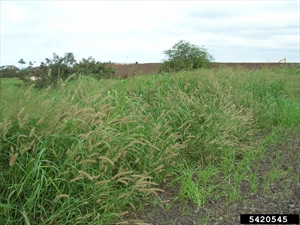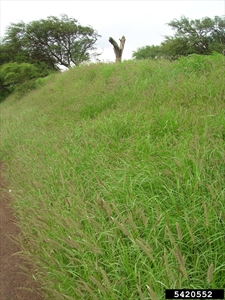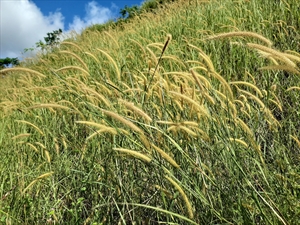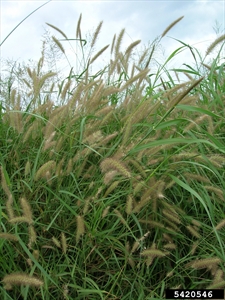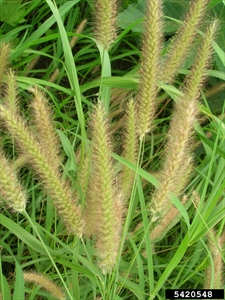- Widespread. Asia, Africa, North, South and Central America, Caribbean, Oceania. In many Pacific islands.
- Perennial grass, impacting native species and crops, producing masses of seeds and forming large continuous expanses. Particularly invasive in fallows after crop harvests, but also along roadsides and in national parks. Remains green until late in dry season, providing fuel for hotter fires later.
- Upright, slender, hairless stems, arising from crown at the base, up to 3 m tall. Stems with 5-10 nodes, sometimes with roots. Leaves, with sheath partially enclosing stems; leaf blades up to 45 cm, with fringe of hairs where sheaths meets leaf blades. Seedheads, up to 35 cm long, erect or slightly drooping, yellow, with many densely packed, stalkless, flower spikelets, surrounded by numerous feathery bristles. Seeds with bristles.
- Spread: seed, by wind, animals; contaminated hay; vehicles and machinery; as a contaminant of seed; an ornamental.; or a pasture grass.
- Biosecurity: high risk of introduction; accidental contaminant of seeds; intentional as an ornamental or pasture grass. Noxious weed in parts of USA.
- Biocontrol: little reported.
- Cultural control: hand weeding, slashing or moving (before release of seed); plough and harrowing (replant with grass and/or legume); fire; vehicle hygiene; mission grass-free hay.
- Chemical control: in Australia, glyphosate (and Fiji); imazapyr; imazapyr + glyphosate.
